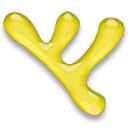Top FigTree Alternatives for Phylogenetic Tree Visualization
FigTree, while a valuable tool for many researchers, particularly those working with BEAST output for phylogenetic tree visualization, was designed primarily for its developer's specific needs. This often means it might lack the extensive polish or comprehensive features found in more commercially developed or widely supported software. If you're looking for a different approach, more platform flexibility, or a broader feature set beyond what FigTree offers for displaying and annotating phylogenetic trees, exploring a reliable FigTree alternative is essential.
Top FigTree Alternatives
Finding the right tool to visualize and analyze your phylogenetic data is crucial for clear communication and robust research. Here's a look at some excellent alternatives to FigTree that cater to various needs and preferences.

TreeView X
TreeView X is an excellent open-source FigTree alternative for users across Linux, Unix, Mac OS X, and Windows. It's designed to display phylogenetic trees from NEXUS and Newick format files, offering broad compatibility. As a free and open-source solution, it's a great choice for those seeking a cross-platform viewer without cost.

TreeView
TreeView is a dedicated tree drawing software available for Apple Macintosh and Windows, also supporting Linux. As a free solution, it provides a straightforward way to visualize phylogenetic trees, making it a viable FigTree alternative for users who prioritize simplicity and specific platform availability.

Dendroscope
Dendroscope is a powerful and free FigTree alternative specifically designed for researchers who need to efficiently visualize rooted phylogenetic trees and networks, including increasingly large datasets. Available on Mac and Windows, it offers robust capabilities for complex phylogenetic studies, making it a strong contender for those dealing with intricate tree structures.
Choosing the best FigTree alternative depends on your specific needs, including your operating system, the complexity of your phylogenetic data, and whether you prefer open-source solutions. Explore these options to find the perfect fit for your research workflow.